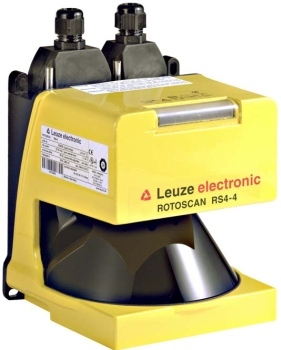Feed SparkFun Electronics [copy] http://www.sparkfun.com/feeds/news has loading error: cURL error 22: The requested URL returned error: 405
Feed The RFID Weblog [copy] http://www.rfid-weblog.com/index.rss has loading error: cURL error 22: The requested URL returned error: 404 Not Found
Feed tqfp.org [copy] http://tqfp.org/rss/ has loading error: A feed could not be found at `http://tqfp.org/rss/`; the status code is `200` and content-type is `text/html; charset=utf-8`
Diodes part 3: a working diode steering circuit
I've made something interesting with my aluminium and soda bicarb diodes: a 7-segment display encoder. Also includes instructions on how to make your own.
Kalman filter
In few projects I've needed the Kalman filter to suppress the noise and other inaccuracies especially from accelerometers. Below is a nice picture from a live stream of data transmitted by the ESP8266 LDR over websockets to an application server written in javascript. The data received in the browser looks like:
With red is raw data and with white is the predicted data after the Kalman filter was applied.
Inside of a 1000lx bulb LED

Since this Livarno bulb refused to work after few months of fine operation I decided to dismount it.
Power supply was covered in rubber and it take a while to clean it between the components.
32 LEDs are used for this bulb. I've tested few of them with a 5V power supply and are very bright (don't look at them since is not a nice feeling after that)
Here is the power supply. Still has rubber left between components.
Manual testing of Linux Kernel GTP module
In May 2016 we got the GTP-U tunnel encapsulation/decapsulation module developed by Pablo Neira, Andreas Schultz and myself merged into the 4.8.0 mainline kernel.
During the second half of 2016, the code basically stayed untouched. In early 2017, several patch series of (at least) three authors have been published on the netdev mailing list for review and merge.
This poses the very valid question on how do we test those (sometimes quite intrusive) changes. Setting up a complete cellular network with either GPRS/EGPRS or even UMTS/HSPA is possible using OsmoSGSN and related Osmocom components. But it's of course a luxury that not many Linux kernel networking hackers...
Cellular re-broadcast over satellite
I've recently attended a seminar that (among other topics) also covered RF interference hunting. The speaker was talking about various real-world cases of RF interference and illustrating them in detail.
Of course everyone who has any interest in RF or cellular will know about fundamental issues of radio frequency interference. To the biggest part, you have
cells of the same operator interfering with each other due to too frequent frequency re-use, adjacent channel interference, etc.
cells of different operators interfering with each other due to intermodulation products and the like
cells interfering with cable TV, terrestrial TV
DECT interfering with cells
cells or microwave links interfering with SAT-TV reception
all types...
Towards a real SIGTRAN/SS7 stack in libosmo-sigtran
In the good old days ever since the late 1980ies - and a surprising amount even still today - telecom signaling traffic is still carried over circuit-switched SS7 with its TDM lines as physical layer, and not an IP/Ethernet based transport.
When Holger first created OsmoBSC, the BSC-only version of OpenBSC some 7-8 years ago, he needed to implement a minimal subset of SCCP wrapped in TCP called SCCP Lite. This was due to the simple fact that the MSC to which it should operate implemented this non-standard protocol stacking that was developed + deployed before the IETF SIGTRAN WG specified M3UA or SUA came around. But...
Testing (not only) telecom protocols
When implementing any kind of communication protocol, one always dreams of some existing test suite that one can simply run against the implementation to check if it performs correct in at least those use cases that matter to the given application.
Of course in the real world, there rarely are protocols where this is true. If test specifications exist at all, they are often just very abstract texts for human consumption that you as the reader should implement yourself.
For some (by far not all) of the protocols found in cellular networks, every so often I have seen some formal/abstract machine-parseable test specifications. Sometimes it was TTCN-2, and...
FOSDEM 2017
Last weekend I had the pleasure of attending FOSDEM 2017. For many years, it is probably the most exciting event exclusively on Free Software to attend every year.
My personal highlights (next to meeting plenty of old and new friends) in terms of the talks were:
20 Years of Linux Virtual Memory by MM-Guru Andrea Arcangeli
GPU-Enabled Polyphase Filterbanks by Jan Kraemer
Virtual multi-antenna arrays for estimating the bearing of radio transmitters by Francois Quitin
Secure Microkernel for Deeply Embedded Devices by Jim "jserv" Huang
A discussion of Fedora's Legal state by Tom Callaway
Radio Lockdown Directive by Max Mehl
I was attending but not so excited by Georg...
Free Stuff, January–June 2016
It's been a while since we've posted, but yes, we are still giving away free stuff! Even though we can't respond to each and every email, we do read and carefully consider all of them, and we choose at least one awesome group, project, or individual each month to send some free hardware to. Here are the free stuff recipients for the first half of 2016.
ADS-B Out Open Source ProjectWe gave a HackRF One to developer and pilot Christopher Young, whose latest development project is an in-flight ADS-B Out transponder. ADS-B Out allows pilots to broadcast position, ground speed, and...
Реверс-инжиниринг лазерного сканера Leuze RS4

Ранее я уже рассказывал о реверс-инжиниринге лазерного датчика расстояния. В этот раз речь пойдет о более сложном устройстве — лазерном сканере Leuze RS4. Как и датчик, этот сканер попал ко мне в сломанном состоянии, так что пришлось заняться восстановлением его работы, и в процессе улучшить некоторые его характеристики, и, фактически, переделать его в другое устройство.
Читать дальше →
